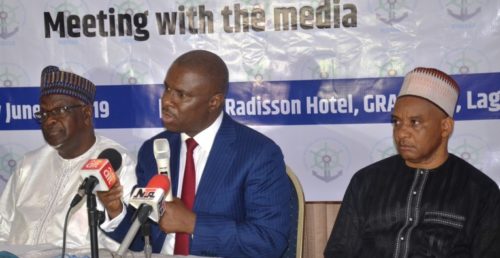
The Director-General, Nigerian Maritime Administration and Safety Agency (NIMASA), Dakuku Peterside, said that the agency had facilitated the creation of over 7,000 jobs in the last six months through its Cabotage compliance strategy.
Dakuku stated this on Thursday in Lagos while speaking with journalists on the activities of agency.
He said NIMASA had developed strategies that had ensured a steady rise in the number of jobs created through manning, crewing, stevedoring, and dockworkers engagement. This, he said, has positioned the maritime industry as one of the key sectors that will support the realisation of President Muhammadu Buhari’s pronouncement during his Democracy Day broadcast of bringing 100 million Nigerians out of poverty in 10 years.
“We have always known that the political will to deal with the issue of waivers in the Cabotage regime had been the challenge in the past. Our pronouncement and implementation of the new Cabotage compliance strategy has led to the engagement of over 7,000 Nigerians in various sub-sectors within the industry. This has also resulted in 32% increase in vessels operating under the Cabotage regime in the first two quarters of 2019,” he claimed.
Dakuku said that the agency had inspected and surveyed over 600 vessels calling at Nigerian ports.
He said the increased inspection and survey had ensured that sub-standard vessels no longer call at the ports, which has also improved safety on Nigerian waters.
He also said that it now takes less than 24 hours for the agency to issue sailing clearance to vessels that call at Nigerian ports, from about seven days at the time the current management of NIMASA came on board.
On insecurity on the nation’s waterways, he said, “The issue of maritime crime has been challenging, not only to us as a nation but also the entire Gulf of Guinea. To achieve the objective of a safe and secure maritime environment that will guarantee the realisation of the president’s pronouncement, commitment is critical and we at NIMASA have decided to take the challenge head-on with the various strategies formulated at the agency’s level to drive the process.”
